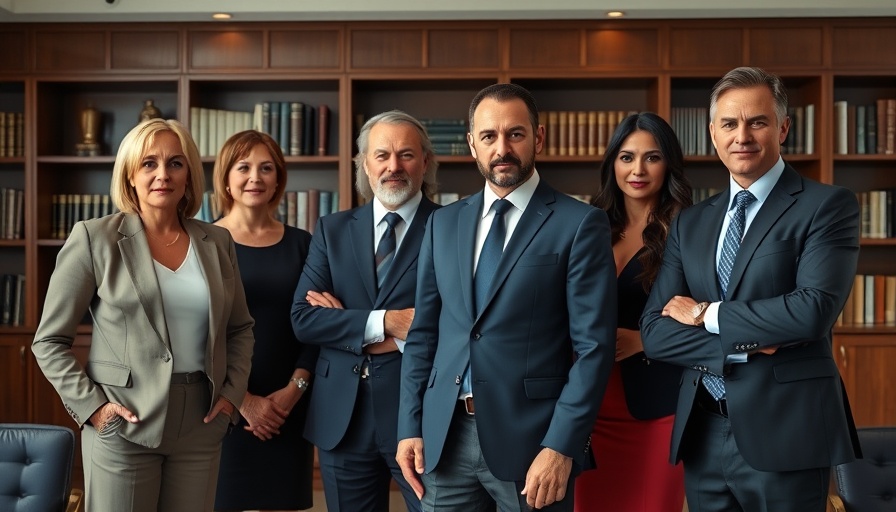
Understanding Leadership Effectiveness Across Contexts
Evaluating leadership effectiveness isn't just about individual capabilities; it's also about the environment leaders operate in and the followers they manage. The perception that most leaders are mediocre can stem from a lack of cohesive synergy between these factors. As articulated by psychologist Robert Hogan, a significant proportion of managers fall into the 'bad' category. This paints a picture where many leaders find themselves in a limbo of 'mediocrity.' If leadership effectiveness tends to skew towards the center of a normal distribution, as suggested, then it’s understandable why many might fall into this mediocre segment.
Leader-Follower Dynamics: A Two-Way Street
The relationship between leaders and their followers is often co-dependent. A leader's effectiveness is closely tied to how well their followers engage and cooperate. The question of leadership mediocrity becomes intricate when considering this interplay: Does a leader fail because of their own shortcomings, or do their followers play a crucial role in this equation? Effective teams are those that can harmoniously achieve goals, which makes it challenging to assess individual leader capabilities without acknowledging follower dynamics. The very essence of leadership lies in the mutual influence between leaders and followers, which complicates simplistic evaluations of leader quality.
The Bell Curve of Leadership: Is Mediocrity the Norm?
Utilizing the bell curve to analyze leader effectiveness leads to a fascinating conclusion: if most leaders are indeed mediocre, it could reflect broader systemic issues within organizations. This occurs when leadership training and development processes fail to equip leaders with essential skills. A critical evaluation reveals that training mechanisms often emphasize merely operational skills over strategic leadership capabilities. Thus, if organizations expect extraordinary outcomes without investing in exceptional leader development, mediocrity is likely to be their reality.
Consequences of Mediocre Leadership
Mediocre leaders may bring about predictable but detrimental outcomes within an organization. Such leaders often struggle to inspire their teams, resulting in lower morale and productivity. Employees may exhibit disengagement, which can exacerbate retention issues. This raises essential questions: What are the long-term effects of continuous mediocre leadership on organizational structure and culture? It underpins the necessity of a robust evaluation framework for leaders that encompasses follower engagement and overall organizational health.
Strategies for Elevating Leadership Quality
To combat the prevalence of mediocrity, organizations must prioritize the training and development of their leaders. Employing continuous feedback mechanisms, mentorship opportunities, and diverse leadership training programs can foster an environment of growth and improvement. By focusing on core leadership skills like effective communication, strategic thinking, and emotional intelligence, organizations can help leaders transcend mediocrity. Moreover, fostering a culture that encourages innovation and personal accountability among followers can promote a more dynamic interplay between leaders and their teams.
Future Predictions for Leadership Dynamics
With the understanding that both leaders and followers contribute to the success of organizational goals, future trends in leadership development seem poised for transformation. Organizations may shift their approach to emphasize collective responsibility, where followers are also encouraged to step into leadership roles. This paradigm could lead to a vibrant workplace culture, characterized by collaboration and shared vision, reducing the prevalence of mediocrity.
The Need for Self-Reflection Among Leaders
The evaluation of leadership effectiveness invites an essential component: self-reflection among leaders. As they navigate their roles, leaders must continuously assess their impact on their teams and the organization's success. This practice can yield beneficial insights, enabling leaders to adjust their styles to better meet their team's needs and align with their organizational goals.
Conclusion: Breaking Free from Leadership Mediocrity
Leaders and their followers share the onus of achieving effectiveness. Recognizing the complexities involved can lead to more sound engagements and a healthier organizational environment. It’s crucial for business leaders, CEOs, and executives to address mediocrity head-on, investing in both individual leader growth and the dynamics of their teams. By doing so, they can create thriving organizations ready to tackle the challenges of the contemporary business environment. Seize the opportunity to redefine what leadership can achieve—invest in your growth today!
 Add Row
Add Row  Add
Add 




Write A Comment